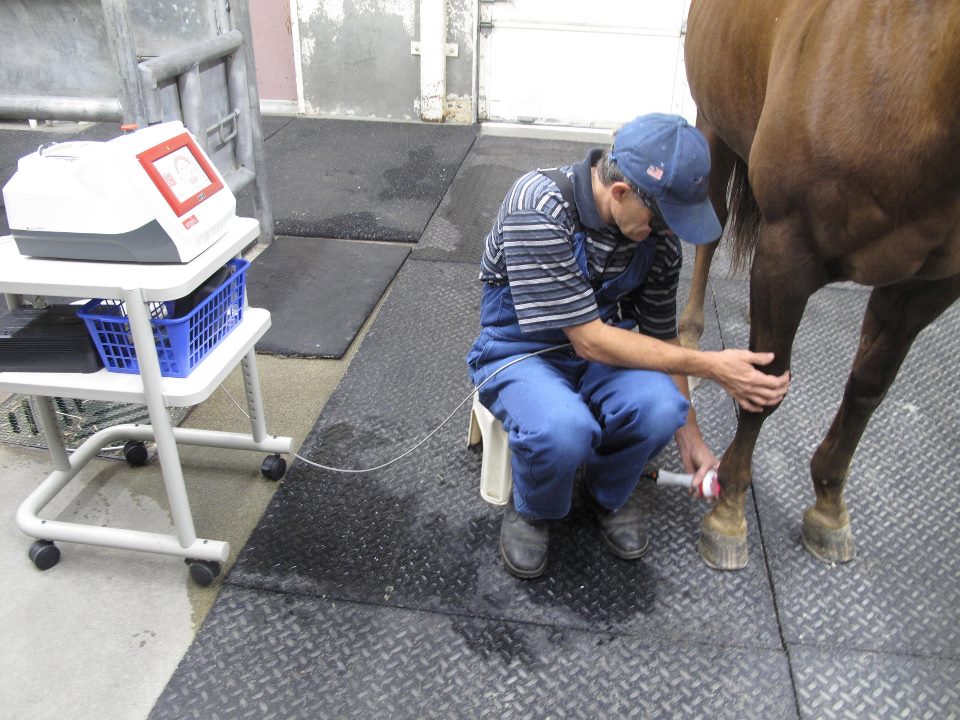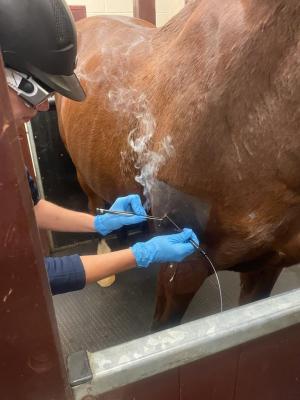Checking Out the Benefits of Laser Treatment in Equine Treatment for Enhanced Recuperation
The advent of laser therapy in equine treatment provides an encouraging avenue for boosting recuperation and general health. Especially efficient for soft cells injuries, laser treatment also plays a substantial duty in taking care of chronic discomfort and boosting blood flow. Its capacity to increase collagen manufacturing further adds to cells integrity.
How Laser Therapy Works
Laser therapy, an advanced modality in equine therapy, runs by giving off particular wavelengths of light to penetrate tissues and stimulate cellular procedures. This advanced innovation uses the power of photons to interact with chromophores within the cells, activating photochemical responses that improve mobile metabolic rate. The main device entails the absorption of light by mitochondrial chromophores, causing raised manufacturing of adenosine triphosphate (ATP), the cell's energy currency.
The altitude in ATP degrees speeds up different biological processes, consisting of boosted healthy protein synthesis and cell expansion. Furthermore, laser therapy modulates inflammatory feedbacks by reducing pro-inflammatory cytokines and increasing anti-inflammatory cytokines. This twin activity assists in reducing pain and advertising cells repair.

Benefits for Soft Cells Injuries
When attending to soft tissue injuries in horses, laser therapy offers a plethora of benefits that dramatically boost healing results. Soft tissue injuries, including ligaments, tendons, and muscles, are usual in equine athletes and often need considerable healing periods. Laser therapy, or photobiomodulation, advertises mobile regeneration and optimizes cells fixing by boosting mitochondrial activity, thus speeding up the all-natural recovery procedure.
One of the primary advantages of laser therapy is its capability to lower swelling. By targeting the affected area with particular wavelengths, laser treatment minimizes the inflammatory reaction, reducing swelling and linked discomfort. This anti-inflammatory effect is critical in managing the first phases of injury, where excessive swelling can restrain healing.

In addition, laser therapy stimulates the production of collagen, a crucial healthy protein for keeping the integrity and elasticity of soft tissues. Enhanced collagen synthesis speeds up the repair work of damaged frameworks, reducing the threat of reinjury. Subsequently, laser treatment offers a non-invasive, drug-free service for accelerating the rehabilitation of soft cells injuries in equines.
Taking Care Of Chronic Pain
In the world of equine healthcare, handling chronic discomfort offers a substantial challenge, frequently requiring multifaceted strategies for efficient therapy. Chronic discomfort in steeds can come from a range of sources, consisting of arthritis, laminitis, and other degenerative conditions. Typical monitoring techniques, such as anti-inflammatory drugs and physical treatment, have their advantages but can be limited by side results and inconsistent effectiveness.
Laser therapy has actually become an appealing adjunctive therapy for managing chronic discomfort in horses. This non-invasive modality utilizes certain wavelengths of light to penetrate cells, promoting mobile repair and reducing swelling. By boosting microcirculation and stimulating the release of endorphins, this page laser treatment can give considerable discomfort relief without the damaging impacts frequently related to drugs.
The capacity to target particular discomfort sites specifically makes laser treatment a functional device in the comprehensive pain management toolbox. As research study proceeds to progress, the integration of laser therapy in equine persistent pain administration holds substantial capacity for enhancing the quality of life for influenced equines.
Enhancing Recovery Times
Structure on the promising outcomes observed in pain monitoring, laser treatment also shows considerable potential in boosting recovery times for equine people. This modality works by accelerating cellular regeneration and improving blood flow, which are important consider the healing process. The application of laser treatment promotes the production of adenosine triphosphate (ATP), thus raising the power offered for mobile repair service and minimizing inflammation.
Scientific researches have actually shown that equines treated with laser treatment display quicker healing from musculoskeletal injuries, operations, and soft tissue damage. The decrease in swelling and discomfort not just aids in faster cells fixing yet additionally permits earlier and much more effective rehabilitation workouts. This is especially advantageous for efficiency equines, where minimizing downtime is essential for preserving affordable timetables.
Moreover, laser treatment can be precisely targeted to certain injury sites, guaranteeing that the therapeutic impacts are localized and powerful. This accuracy reduces the likelihood of adverse effects and promotes more regular recuperation outcomes. Equine vets are significantly including laser treatment into their treatment procedures, acknowledging its efficacy in speeding up healing times and improving the total recovery procedure for equine patients.
Improving Total Health
As laser treatment continues to get grip i loved this in equine medicine, its benefits extend past just injury recovery, substantially adding to the general well-being of horses (Equine Therapy). This restorative modality has actually demonstrated effectiveness in alleviating persistent pain, decreasing swelling, and promoting mobile regrowth. Such results are not only critical for recovery however additionally enhance the lifestyle for equine people, guaranteeing they continue to be active and web content
Among the essential aspects in which laser treatment aids in boosting total wellness is via its analgesic impacts. Discomfort management is essential for horses, particularly those involved in affordable sports or extensive tasks. By reducing pain, laser therapy makes it possible for these animals to do efficiently and decreases the danger of offsetting injuries.

Final Thought
In summary, laser treatment presents a considerable development in equine therapy by promoting cellular regrowth, lowering inflammation, and increasing recovery procedures. This great site non-invasive technique relieves pain, boosts blood flow, and advertises efficient nutrient shipment to hurt tissues. In addition, the treatment's capability to increase collagen manufacturing ensures the maintenance of tissue stability. As a result, laser therapy becomes an important device for enhancing rehab and enhancing the general health of horses.